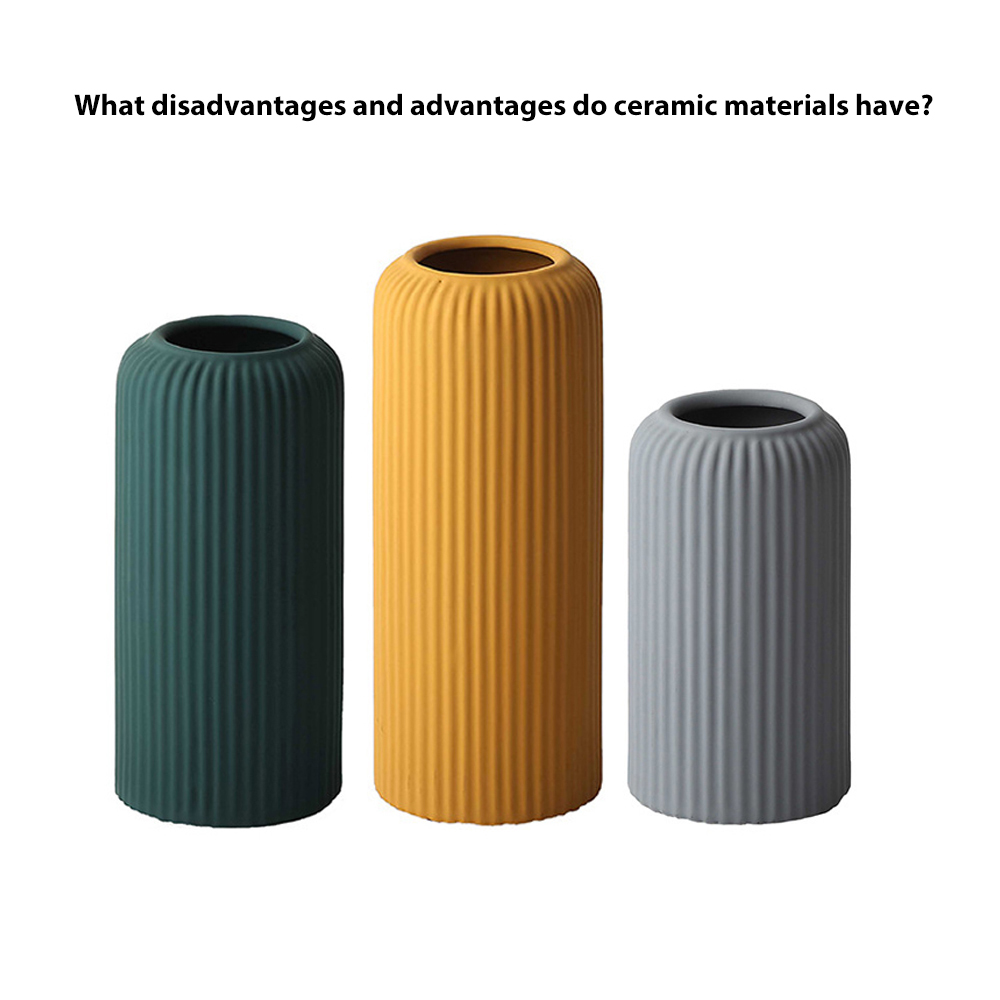What disadvantages and advantages do ceramic materials have?
Time of issue: 2022-09-16 17:14:02
What disadvantages and advantages do ceramic materials have?
Introduction
Perhaps at some point you heard the term "ceramics", such as in school when the history teacher explained the forms of ceramics made by pre-Inca cultures or when you thought of vases for flowers, and you only knew They were fragile items. However, the term "ceramic" is much more complex and involves other types of materials such as tiles, glass, refractory materials, etc. In this text, the chemical background of certain aspects presented by ceramic materials that are used and exploited in different activities, and which also include useful objects in daily life, will be explained.
1. DEFINITION
Ceramic materials are inorganic solids formed by metallic and non-metallic elements linked mainly by ionic and/or covalent bonds, some of which were exposed to high temperatures to reach a hard, non-combustible and non-oxidizable structure. Ceramic materials can be crystalline, non-crystalline or glass-ceramic (a combination of both mentioned above).
2. PROPERTIES
Mechanical properties: At room temperature, they are hard and brittle due to the type of bond (ionic/covalent) between the atoms that make them up. In addition, at high temperatures, they are deformable since grain boundaries are allowed to slide.
Magnetic properties: In general, ceramic materials do not usually have these properties; except for two, ferrites and garnets (also called ferromagnetic ceramics).
Electrical properties: The vast majority of ceramic materials are electrical insulators since they have high dielectric strength and low dielectric constant. Other ceramics have other dielectric properties such as the ease of being polarized.
Thermal properties: Almost all ceramic materials have low thermal conductivities due to their strong (ionic/covalent) bonds. The energy difference between the covalence band and the conduction band in these materials is too great for Electrons are excited towards the conduction band, for this reason they are good thermal insulators.
3.ADVANTAGES AND DISADVANTAGES
As mentioned above, ceramic materials are characterized by strong ionic and/or covalent bonds between their atoms, which allows them to have high hardness, as well as being good thermal and electrical insulators, since their strong bonds make it difficult for free movement of electrons therefore its electrical and thermal conductivity is limited. This, in turn, causes ceramic materials to have high melting points, since high heat supplies are necessary to break their bonds.
On the other hand, ceramic materials have good chemical stability, which allows them to be resistant to aggressive agents such as those present in the oxidation process. In addition, since most ceramics are made up of metallic and non-metallic elements, they can be considered as previously corroded materials, therefore they will be resistant to corrosive components.
However, this type of material has some disadvantages such as brittleness; that is, the tendency to break easily, since it is not possible to move the atoms without generating a break in their unions. Consequently, they cannot be easily plastically deformed (less ductile), which limits their ability to withstand tensile loads (low toughness).
In summary, the following table can be shown with the main advantages and disadvantages:
| Advantages | Disadvantages |
| high hardness | fragile |
| Good electrical and thermal insulators | low ductility |
| high melting point | low toughness |
| Low density | |
| Good chemical stability | |
| corrosion resistant | |
| Resistant to aggressive agents (oxidation) | |
| compressive strength |
RECENT POSTS
- Stoneware vs Porcelain vs Earthenware: Quick Decision Guide
2025-10-09
- Are Ceramic Glazes Food Safe? The Truth Behind the Shine
2025-10-09
- Christmas Decoration Trends That Wow Every Guest
2025-09-18
- Halloween Decoration Trending Ideas with Ceramics For 2025-26
2025-09-18
- Top 10 Custom Plant Pots: Add Personality to Your Plants
2025-09-18
- Custom Incense Holders : The Ultimate Guide in 2025
2025-08-22
- Customized Ashtrays as Wedding Favors: A Unique Touch for Guests
2025-08-22
- 15 Best Custom Flower Vase Design Ideas To Enhance Your Decor
2025-08-05









